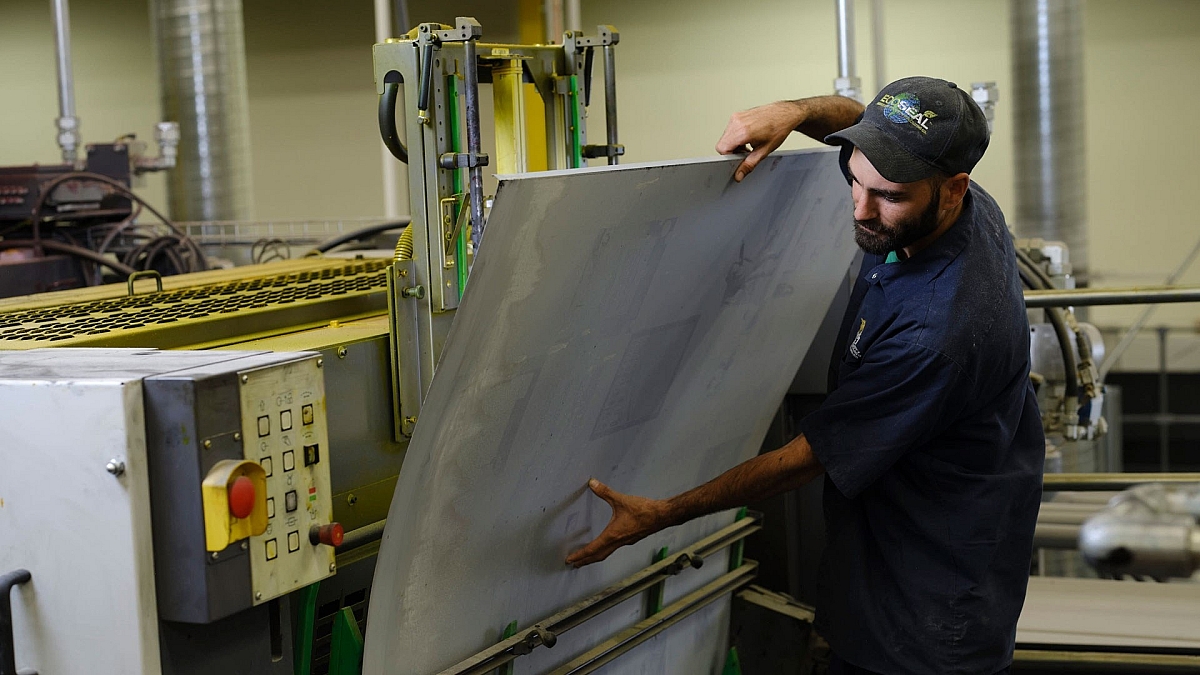Why going process free is better for the environment

In a time of rising costs, squeezed margins, and fast-moving customer demands, printers need to achieve a combination of greater efficiency, productivity, and profitability now more than ever.
But these days, they have to make their print process more sustainable, too.
Not only are they obliged to meet more stringent environmental standards, but their customers and end users are demanding that work is produced as sustainably as possible.
Traditional wet processed plate production involves complex chemical processing, accompanied by hazardous waste, emissions, and heavy use of power and water. The good news for printers, though, is that process free plates bring a range of environmental benefits, even as they support improved plate making efficiency and output.
Here are three reasons why going process free can make such a big difference to your environmental efforts and your business.
1. It eliminates the chemistry needed for traditional plates
When printers use KODAK SONORA Process Free Plates, no plate processor is required. This means that all the chemistry and waste that goes along with traditional plate processing goes away for good. Not only can you reduce the consumption of activator and stabilizer chemistry associated with the traditional method — the developer, replenisher, gumming solution, metals, and clean-out finisher —to zero, but you can also deliver superior print performance.
Another environmental benefit of switching to KODAK SONORA Process Free Plates is that they create a more comfortable workplace for your prepress team. This may be achieved by cutting your employees' exposure to potentially harmful chemicals and reducing health risks. As a result, your decision to switch to process free plates can improve morale and enhance productivity.
2. It means you're disposing of less waste
Since you no longer have to deal with any chemistry, and there's no plate processor to clean or maintain. Going process free eliminates the disposal of chemicals, exhausted developers, filters, and wipes into the environment.
By removing the processor, process free plates also eradicate the unappealing and arduous manual task of cleaning the machine. This means there's also no contaminated residual liquids to deal with. Together, this has obvious benefits in terms of reducing pollution of local water systems.
It also adds up to significant cost savings in storage. As many printers know, the storage and subsequent disposal of processing chemistry can be costly. This may be due to local waste regulations changing as environmental studies release new insights, or political agendas shifting. Either way, printers that use traditional wet plates must stay informed and adhere to the latest standards, or risk incurring potentially significant fines.
With process free plates, the risk of penalties is greatly reduced, as is the cost of transportation of chemicals and waste. The aluminum plates themselves can may be recycled, which can even mean printers get a portion of their investment in process free plates returned to them as cash back.
3. It cuts your utilities use
Going process free does more than merely make the process cleaner. When you remove the equipment that processes traditional plates, you consume significantly fewer resources than you would with traditional platemaking, too.
Traditional processed plates require extensive use of water. Process free plates do not. KODAK SONORA Process Free Plates can achieve 400,000 impressions on a web press. So, if you currently require a baked plate to reach your required print run you could eliminate the need to process plates and turn off and decommission your energy intensive post-bake ovens. This can significantly reduce the use of air conditioning on premises, further improving energy consumption during prepress operations.
We estimate that by using cost-saving KODAK SONORA Process Free Plates instead of traditional processed plates, the print industry could save 29 million kWh of electricity, and 468 million liters of water, every year.
In 2005, Kodak was first to successfully commercialize a printing plate that needed no processing chemicals. We understood early that, for printers to feel confident about switching to a more efficient and cleaner alternative, continuing to deliver the operational excellence that customers demand was non-negotiable.. We ensure that our sustainable plate innovations are engineered to promote quality, productivity, efficiency, and profitability.
Our ground-breaking KODAK SONORA Process Free Plates are currently used by over 6,000 printers worldwide, making them the best-selling process free plates on the market.
The latest product generation, KODAK SONORA XTRA Process Free Plates, boosts performance and quality, delivering faster imaging speeds, dramatically improved image contrast, and more robust handling. And it removes the potential for processing variability, so printers benefit from more consistent and stable plates that reduce time, waste, and cost in the pressroom, too.
For nearly two decades, Kodak has invested in the continuous improvement of process free technology and can be trusted to stay at the forefront of printers' demand for increased operational efficiency that accompanies the shift from traditional wet plates to process free.
Kodak goes to great lengths to deliver solutions that are not only superior to other alternatives, but are also backed by a company-wide commitment to sustainability. This is fast becoming a commercial imperative for printers. It's clear that governments, regulators, and brands are becoming more aware of its importance. And more and more printers are now realizing it's the right thing to do, too.
Ask your sales rep about branding to show your customers that you're a Kodak sustainability partner.